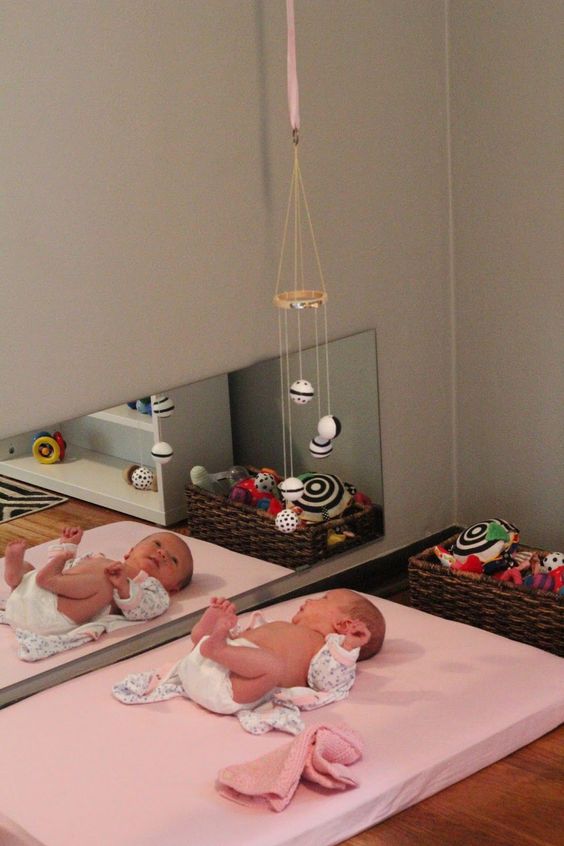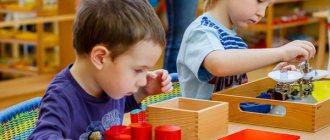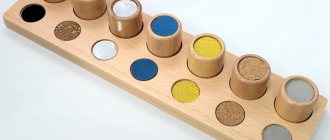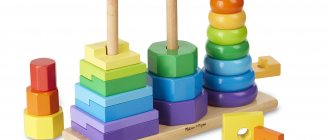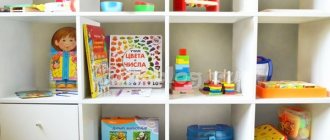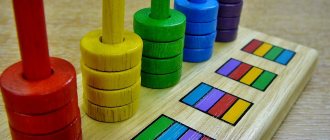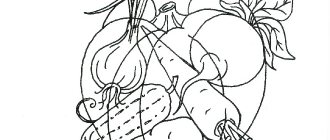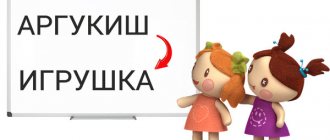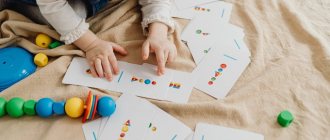Various methods of early development of children are popular among modern parents. But since the main activity for children is play, many of the systems are built accordingly, in particular, Montessori games. The author, Maria Montessori, offers not just a theoretical approach, but also specific options for educational fun for children aged 2-4 years. We invite you to get to know some of them.
Basic principles
We will not now dwell in detail on the essence of Maria Montessori’s early development system; a separate article is devoted to this topic, the text of which you can read here.
Let's briefly look at 5 fundamental principles:
- The main task of both the parent and the teacher is to ensure that the children themselves solve the tasks assigned to them. You can help, but only morally - with support and praise. The child must cope with the goal set before him on his own. In this case, he will gain self-confidence, independence, learn to overcome difficulties, and look for solutions.
- In the first place is taking into account the interests and desires of the child; nothing can be imposed on him; the baby does what he likes; the task of adults is to prepare the necessary developmental aids for him.
- Children should be directly involved in the education of younger children. To a greater extent, this principle is implemented in kindergarten groups.
- The main thing is to interest the baby, he will learn and develop himself.
- It is necessary to treat the child with respect, not criticize his actions, and recognize his right to make mistakes.
The motto of the system is “Help me do it myself,” and it is based on self-training and self-education.
Conclusion
Today we looked at options for educational games using the Montessori method for children of different age groups. The principle of selecting Montessori activities and toys for children is always the same: follow the child’s interest, take into account sensitive periods and always have several activities with different levels of complexity and focus ready. Don’t be afraid to be inspired by ideas on the Internet and even come up with your own games, turn to literature and the experience of other parents and teachers, and very soon you will no longer have difficulties planning activities.
The simplest games
There are many Montessori exercises and games. Let's look at the easiest options that you can play at home without any problems.
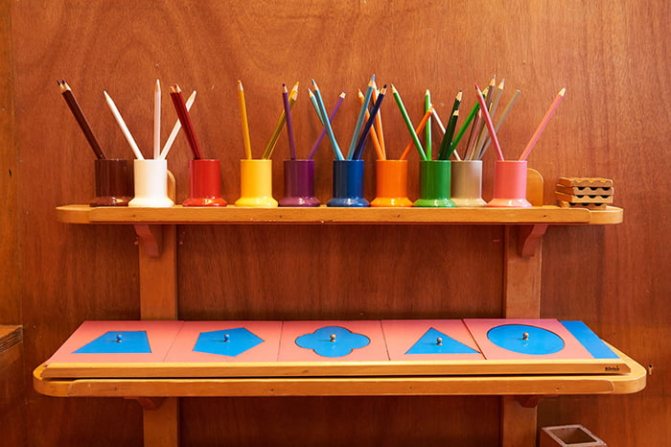
Comparison
Such fun will help to consolidate knowledge about colors in an easy and unobtrusive form. Here are the most useful exercises:
- Correlation. The child is given a circle divided into segments of different colors and a set of colored clothespins, the tones of which match the color of the circle fragments. The task is simple - “put” the clothespins into place (so that their color matches the color of the circle). An additional benefit is the development of fine motor skills.
- Socks. The child is given several socks, his goal is to sort them out in pairs.
The exercises are simple, sure to please the little one, and at the same time useful.
With water
These games are aimed at developing fine motor skills, as they involve working with small objects. Here are some of the most successful examples:
- Several objects should be placed in a basin of water, for example, mosaic elements, pebbles, shells, toys (the smallest ones available). The baby’s task is to take objects out of the container one at a time under the supervision of their parents. To prevent the baby from getting bored, it is better to come up with some interesting story, for example, that he helps an old fisherman get the necessary items from the bottom of the sea.
- The second option is to prepare soup for the queen. Water is poured into a plate at a comfortable temperature for the child, and grains of rice are dropped to the bottom. Using his fingers, the baby must take them out and put them in another container (from where the fairy-tale cook will take the grains and prepare a delicacy from them).
- It’s easy to ask your child to water flowers from a small watering can. This will accustom him to performing household duties and will help him learn new facts about representatives of the flora.
- Whipping foam with a whisk is a healthy pleasure. The child strengthens his hand and has fun.
These are the simplest exercises that require only a little water. The baby will have fun, have fun, and in addition, his individual skills will develop.
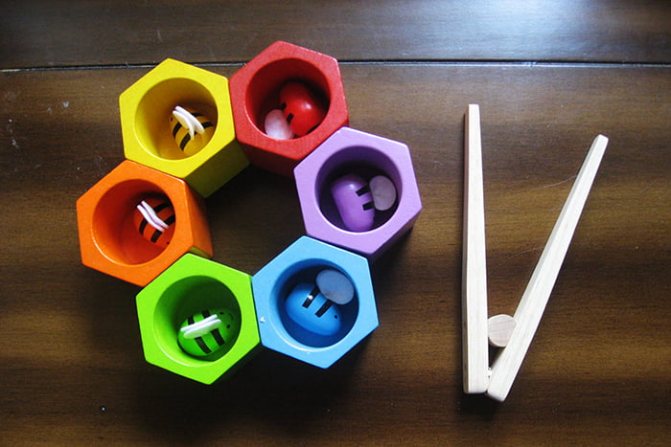
Montessori development for infants from 0 to 2-3 months
It just seems that the newborn can’t do anything yet and only sleeps and eats, but in fact his brain begins to develop rapidly, and you can help.
- Hold your baby in your arms more often and let him look at faces
Newborns by nature have very poor vision and see only the outlines of objects. But there is one object to which even a baby’s eye is sensitive, and that is the human face. Try to make sure that during care and feeding procedures the baby can look at your face at a distance of about 30-40 centimeters. Do not cover your baby with a diaper and do not be distracted by phones and other gadgets when caring for your baby.
- Give your child the opportunity to follow the movement of objects
By the end of the first month of life, babies learn to follow moving objects with their eyes. You can easily use the first mobiles (first the black and white Munari mobile, then the colored versions of the Octahedra mobile), made yourself or purchased from a store
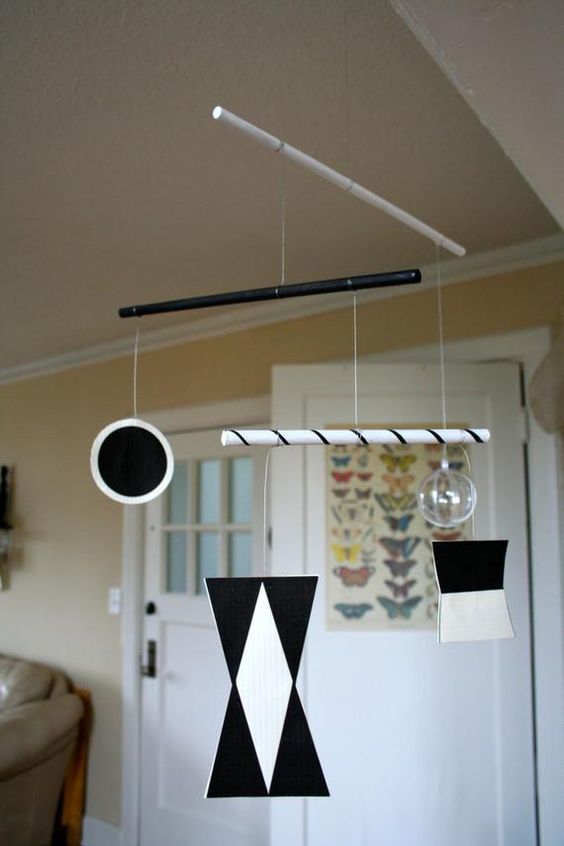
- Allow your baby to receive feedback from the world
If possible, do not limit the baby’s movements and allow him to receive feedback from the world: try to be sensitive to his needs, give him the opportunity to touch different surfaces, experience a variety of sensations (sounds, touches, smells, etc.)
Fine motor games
Among the exercises in the Montessori system, a special place is occupied by those aimed at developing fine motor skills. Here are just a few examples:
- Stringing. You can use fishing line, laces, ropes as a base, and pasta, beads, and hair ties as elements for stringing. The main thing is to maintain interest, so you can invite your child to make a garland to decorate the room, make a necklace for an imaginary mermaid, or as a gift for grandma on her birthday.
- Exercises with forceps. You can invite your baby to use tongs or tweezers to sort some items, such as hair ties, by color. Or ask the child to place the pebbles in small boxes without touching them with his hands, using tweezers.
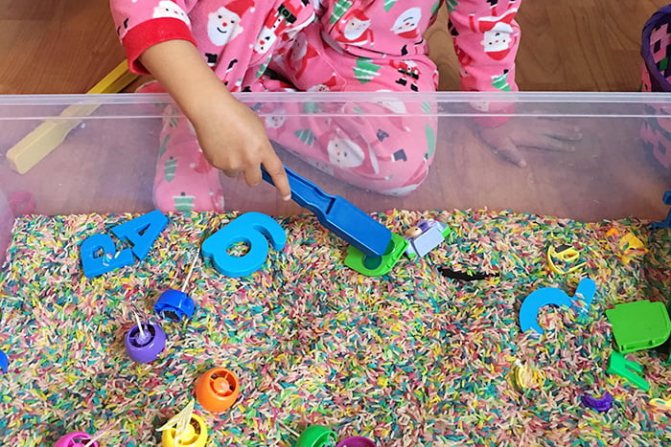
Sensory boxes
Another exercise from the Montessori system that will help develop fine motor skills. Preparing such boxes is not at all difficult: just take a flat box (of course, without sharp edges) and fill it with a bulk substance, for example, sand, semolina, buckwheat, other cereals, or even cotton wool.
Funnels, buckets, jars, spoons, and toy scoops are suitable equipment. The child’s task is to build a city or farm from loose substances and populate it with inhabitants – small toys. You can draw with your finger on the surface, build castles. Parents should not limit the baby, it is enough to observe from the side.
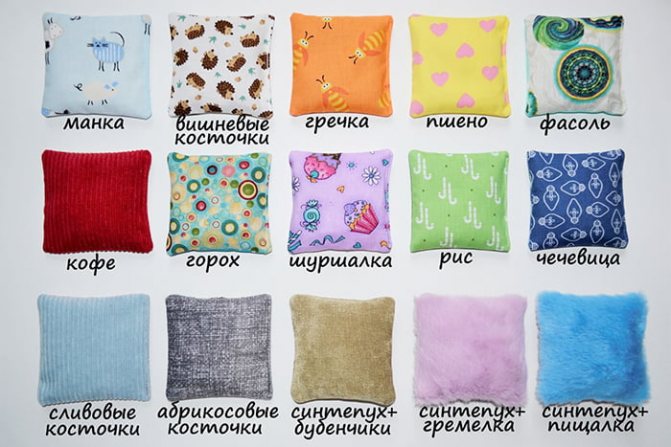
Games with tactile bags
They not only help develop motor skills, but are also aimed at improving the baby’s perception and introducing him to new sensations. It goes like this:
- First, parents prepare a visual aid - the bags themselves, which should feel different from each other. So, one must be made smooth, and the other must be made of rough material, one must be soft, the other must be hard.
- The next step is to introduce the child to these sensations.
- Finally, when he remembers everything, you can offer a game - place the tiny bags in one large (“magic bag”), after which the baby, without peeking, will have to take out the option that his mother asks for.
For children of different ages
Let's look at examples of exercises for kids of different ages according to the Montessori system.
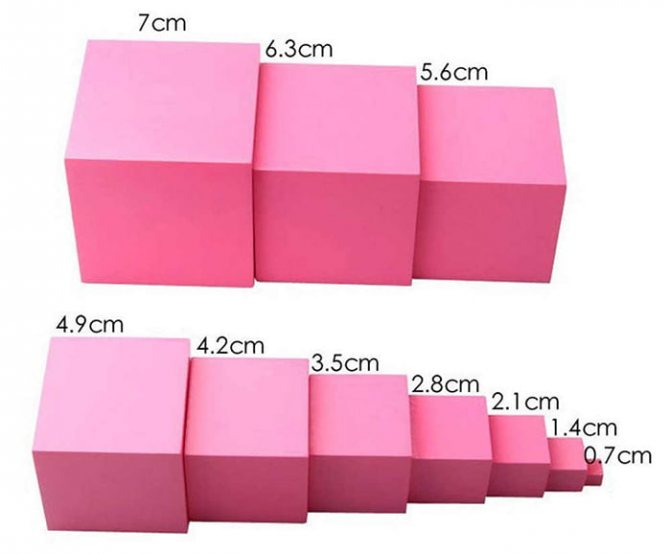
From 1.5 years
There are special wooden blocks of various sizes that are widely popular in Montessori schools. With the Pink Tower set, children can build a small tower based on the matryoshka principle, developing their sensory experience.
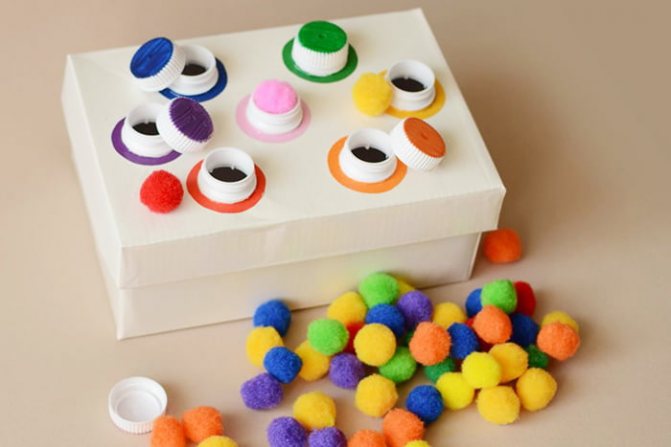
From 2 to 3 years
For children of this age, you can purchase a special Montessori set of objects that vary in size, color, and shape. The baby’s task is to sort, and moms and dads don’t have to demand that he sort objects by color or shape. It is better to give the child freedom of action; he will figure out the comparison parameters himself and identify common features and differences.
If it is not possible to purchase an expensive manual, it is easy to make a similar set yourself. Buttons of various colors and sizes are suitable for this.
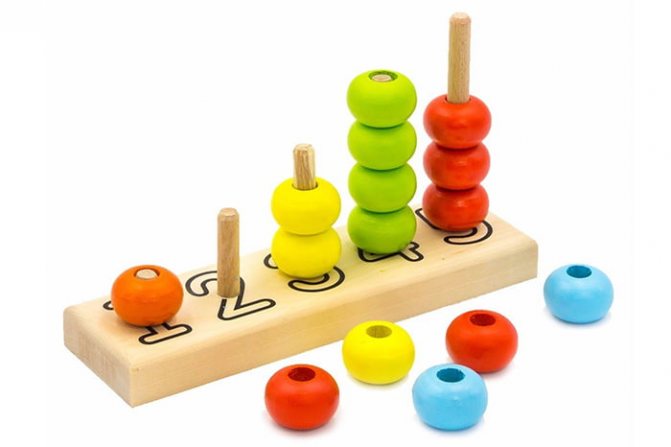
Pyramid
The baby is offered the base of the toy and a row of rings. His task is to find among them those of the same type (for example, the same color) and create a design.
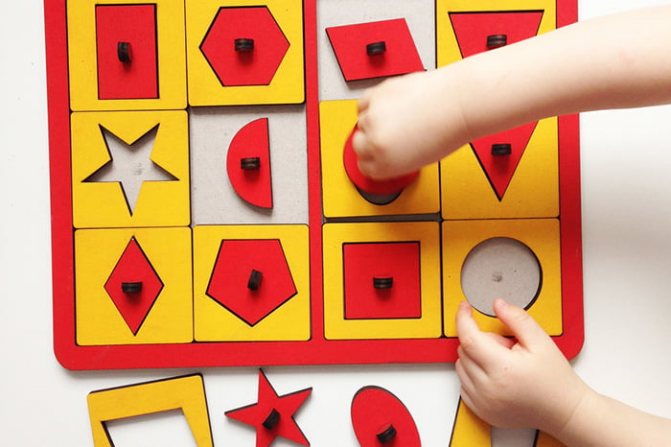
From 3 to 4 years
A suitable option for this age are wooden puzzles, which depict a simple and familiar object to the child. You should not chase a large number of elements; it is very important to take into account the individual characteristics of the baby: for some, only 3-4 components will be enough, while others will easily assemble a structure from 5-6 fragments. The most important thing is to optimally choose the level of difficulty so that the child does not get bored, but also does not lose faith in himself.
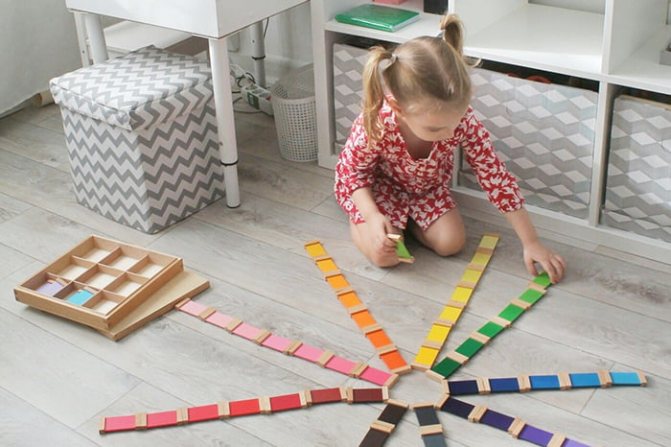
Multi-colored signs
Another exercise widely used in Montessori schools. It is a ready-made set of wooden signs painted in various colors. You can either make them yourself or purchase them. With the help of such a manual, you can teach children to distinguish shades, as well as consolidate previously acquired knowledge about colors.
The child’s task is not just to combine pairs that match in color and shade, but also to name them correctly. At 3–4 years old, you can offer your baby not only basic tones, but also less popular ones, in particular, purple, pink, orange, and brown.
Game options:
- Arrange the signs in gradations from dark to light or vice versa.
- Find among the signs the one whose color is closest to any object in the room’s furnishings (for example, the lamp shade is red - the child looks for and shows the red sign, you can attach it to the lamp, compare and make sure that the problem is solved correctly).
- The parent shows any sign, and the child must find among the remaining ones the one that is darker or, on the contrary, lighter than the one demonstrated.
All this will help you remember colors and understand what “darker” and “lighter” are.
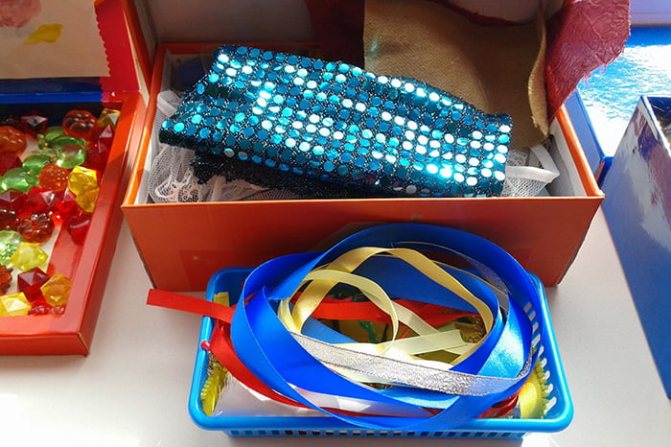
At 4–5 years old
For kids of this age, the “Basket with scraps”, in which pieces of various fabrics are placed, will be an excellent educational activity:
- wool;
- cotton;
- linen;
- nylon;
- silk and others.
There should be two of each fragment. The child’s task is to find a pair, that is, two identical pieces, solely by touch, without looking.
Parents do not need to be prompted - if the child makes a mistake, then when he completes the task and opens his eyes, he will be able to see what’s wrong and quickly figure it out.
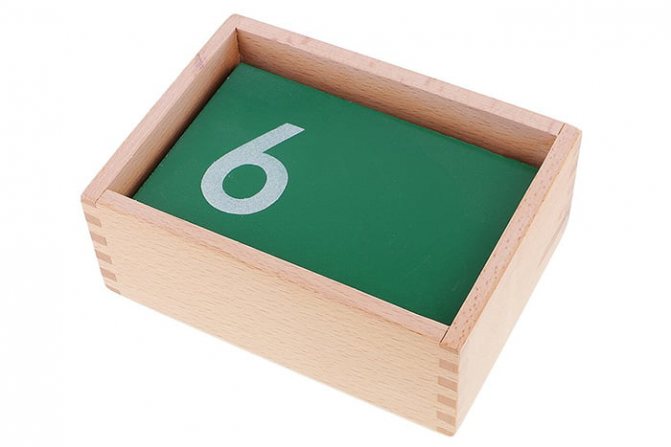
With sandpaper
To complete this exercise, you will need a set that includes 12 small boards, divided into 6 pairs. Each of them contains sandpaper of different grits. The child, like last time, closes his eyes and acts only tactilely. The task is simple - arrange 12 planks into 6 pairs, this is quite possible, since the surface varies.
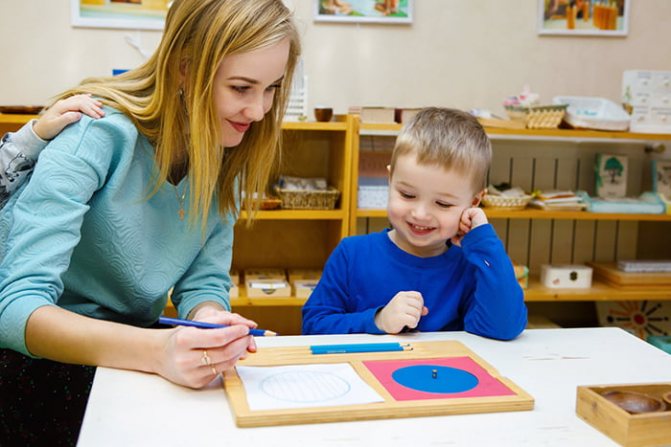
Other toys
Modern manufacturers take advantage of the fact that early development systems are in great demand. That is why there are so many different toys on the market, beautiful, bright, but are all of them useful? Consider the options that can be purchased for Montessori games:
- Sorter. It is a set of elements of various shapes and sizes (as a rule, these are geometric shapes, although other options are acceptable), as well as a special sheet with holes into which these elements are inserted. The child's task is simple - to match the figurine and the hole for it. If desired, you can make a sorter yourself. It is one of the most useful toys for the development of fine motor skills and thinking.
- Framework. Very similar to the previously described sorter. They are a flat frame with holes and figures that match these holes in shape and size. During the game, the child will have to match the figure and the “cutout” in the frame for it. When deciding what is worth buying for your baby, you can choose this one.
- Laces. A wonderful tool for developing fine motor skills and training household skills. Of course, you can buy a store-bought version, a beautiful and bright toy that your little one will love. But it’s not difficult to make one yourself, from thick cardboard, in which holes are cut, and ordinary lace.
- Cups. A set of colored molds that fit into each other like a nesting doll is also a wonderful educational toy. Suitable for babies from one year old. There are many options, differing in the number of elements and cost.
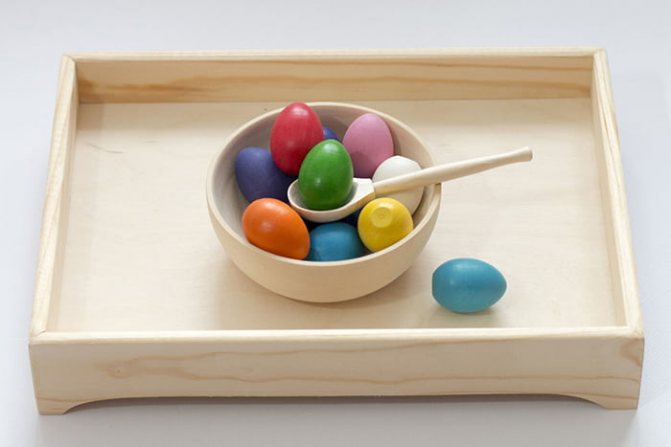
How to make toys yourself according to Montessori principles is described here.
When offering Montessori games to your child, you should not be overzealous, since, often in pursuit of early development, parents deprive their child of childhood. Not everyone succeeds in raising a young genius or erudite, but with the right approach, even the simplest manual, made independently, will be beneficial.
Why is it worth starting Montessori classes from infants?
We believe that incorporating Montessori principles into life can begin from birth. After all, you can already do so much for a newborn: interact correctly with the baby during care, feeding and before bed, talk to him, understand his requests, and also organize a comfortable space for him to grow and develop.
The first thing to remember is that children unconsciously absorb everything they see and feel, this is how their brain works. They have not yet developed voluntary attention or memory, therefore, they do not control what they remember, be it good or bad. This means that it is your task to create a decent environment for development: surround your baby with beauty, care, respect and love.
In the first months of life, a lot of unconscious beliefs are formed about oneself and about the world: is the world around me safe, do those around me love me, am I important to them. In order for the basic picture of the world to develop positively, talk a lot with your baby, be attentive to his physical needs, respect his body and desires.
